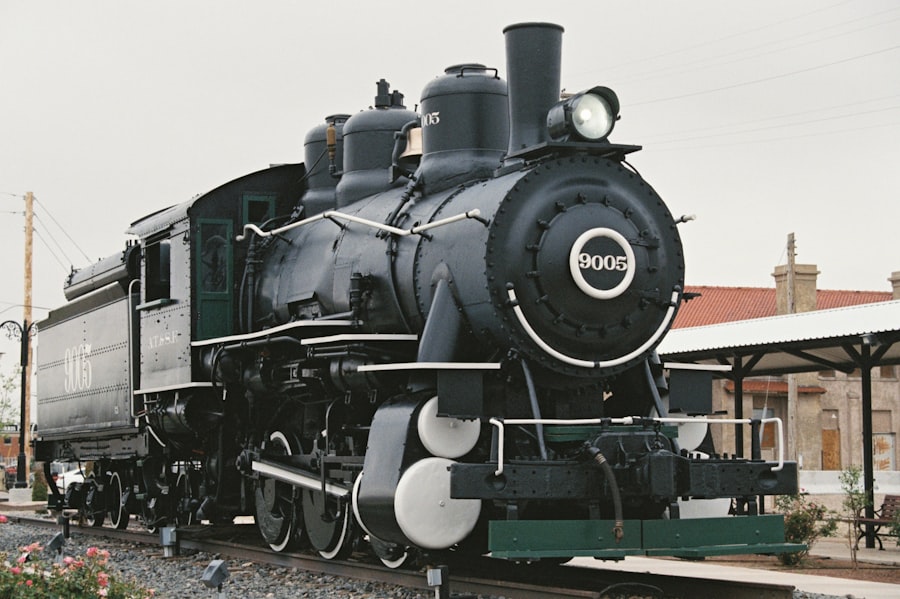The Cessna 172 Skyhawk, often simply referred to as the C172, is one of the most iconic and widely used general aviation aircraft in the world. First introduced in 1956, this single-engine, high-wing airplane has become a staple for flight training and personal flying due to its reliability, ease of handling, and relatively low operating costs. The C172 is powered by a four-cylinder, air-cooled engine, typically producing around 160 to 180 horsepower, which provides sufficient thrust for a variety of flying conditions.
Its design features a spacious cabin that can comfortably accommodate four occupants, making it an ideal choice for both training and recreational flying. The aircraft’s stability and forgiving flight characteristics make it particularly suitable for novice pilots. With a wingspan of approximately 36 feet and a maximum takeoff weight of around 2,550 pounds, the C172 offers a good balance between performance and safety.
Its high-wing configuration not only enhances visibility for pilots and passengers but also allows for better ground clearance during taxiing and takeoff. The C172 has undergone numerous upgrades and variations over the decades, including advancements in avionics and interior comfort, but its fundamental design principles have remained largely unchanged, contributing to its enduring popularity in the aviation community.
Key Takeaways
- The C172 is a versatile and popular aircraft, perfect for both beginners and experienced pilots.
- A thorough pre-flight checklist is essential for a safe and successful flight in a C172.
- Proper takeoff and landing techniques are crucial for a smooth departure and arrival in a C172.
- Avionics and instruments are key for navigating the skies and staying on course in a C172.
- Mastering maneuvers such as turns, climbs, and descents is important for becoming a skilled C172 pilot.
Pre-flight Checklist: Essential Steps for a Successful Flight
Before embarking on any flight, a thorough pre-flight checklist is essential to ensure safety and preparedness. The pre-flight inspection begins with an external walk-around of the aircraft, where pilots should check for any visible damage or abnormalities. This includes examining the wings for dents or cracks, ensuring that control surfaces are free of obstructions, and verifying that the fuel tanks are adequately filled.
A careful inspection of the landing gear is also crucial; pilots should look for signs of wear or leaks that could compromise the aircraft’s performance during takeoff or landing. In addition to the physical inspection, pilots must also review important documentation such as the aircraft’s logbook, which provides insights into maintenance history and airworthiness. Checking the weather conditions is another critical step; understanding wind patterns, visibility, and potential weather changes can significantly impact flight planning.
Pilots should also calculate weight and balance to ensure that the aircraft is loaded within safe limits. This involves accounting for passengers, baggage, and fuel to maintain optimal performance during flight. By meticulously following this pre-flight checklist, pilots can mitigate risks and enhance their overall flying experience.
Takeoff and Landing Techniques: Tips for a Smooth Departure and Arrival

Takeoff and landing are two of the most critical phases of flight, requiring precision and skill. For a successful takeoff in a C172, pilots should first ensure that they are on a runway that is long enough to accommodate their weight and current weather conditions. As they advance the throttle to full power, it is essential to monitor engine instruments for any abnormalities.
The aircraft should be kept on centerline using rudder inputs while maintaining a steady climb attitude once it reaches the appropriate speed. A common technique is to rotate at around 55 knots, allowing the aircraft to lift off smoothly while maintaining control. Landing requires a different set of skills, as it involves managing descent rates and airspeed while aligning with the runway.
Pilots should aim to establish a stable approach by configuring the aircraft with flaps as needed and reducing power gradually as they descend. Aiming for a touchdown point on the runway helps ensure that the landing is controlled and within the desired area. The flare—where the pilot raises the nose just before touchdown—is crucial for achieving a smooth landing.
It is important to maintain a slight back pressure on the yoke during this phase to prevent a hard landing or bouncing back into the air. Practicing these techniques consistently will help pilots develop confidence and proficiency in both takeoff and landing scenarios.
Navigating the Skies: Using Avionics and Instruments to Stay on Course
| Avionics and Instruments | Usage | Importance |
|---|---|---|
| GPS | Provides accurate position information | Essential for navigation |
| Attitude Indicator | Shows aircraft’s orientation | Crucial for maintaining level flight |
| Altimeter | Indicates aircraft’s altitude | Important for terrain clearance |
| Heading Indicator | Displays aircraft’s heading | Key for maintaining course |
Modern C172s are equipped with advanced avionics that enhance navigation capabilities significantly compared to earlier models. Pilots must familiarize themselves with these instruments to effectively navigate during flight. The primary flight display typically includes an artificial horizon, airspeed indicator, altimeter, and heading indicator—all essential for maintaining situational awareness.
Additionally, many newer models feature GPS systems that provide real-time navigation data, allowing pilots to plot courses with greater accuracy. Understanding how to interpret these instruments is vital for safe navigation. For instance, pilots should be adept at reading their altimeter settings to ensure they maintain appropriate altitude levels during flight.
Cross-referencing GPS data with traditional navigation methods such as VOR (VHF Omnidirectional Range) can provide redundancy in navigation, which is particularly useful in areas with limited visibility or when flying under instrument flight rules (IFR). Regular practice with these systems will not only improve navigation skills but also build confidence in using technology effectively while flying.
Mastering Maneuvers: Perfecting Turns, Climbs, and Descents
Mastering basic maneuvers is essential for any pilot looking to enhance their flying skills in a C172. Turns are fundamental maneuvers that require careful coordination between ailerons and rudder inputs to maintain altitude and prevent adverse yaw. Pilots should practice shallow turns initially before progressing to steeper bank angles while ensuring that they maintain a constant airspeed throughout the maneuver.
A common technique is to use a bank angle of around 15-20 degrees for gentle turns while keeping an eye on altitude changes. Climbs and descents are equally important maneuvers that require attention to power settings and pitch attitudes. During climbs, maintaining an appropriate climb speed—typically around 75 knots—ensures optimal performance while avoiding stall conditions.
Pilots should also be aware of their rate of climb; using visual references outside the cockpit can help gauge whether they are climbing too steeply or too shallowly. Conversely, during descents, pilots should practice controlled descents by adjusting power settings while monitoring airspeed closely. Techniques such as using flaps can assist in managing descent rates effectively without compromising safety.
Emergency Procedures: How to Stay Calm and Safe in Unexpected Situations

In aviation, preparedness for emergencies is paramount; understanding emergency procedures can mean the difference between a safe outcome and disaster. Pilots must be well-versed in various emergency scenarios such as engine failure, electrical malfunctions, or adverse weather conditions. In the event of an engine failure during flight, pilots should follow established protocols: maintaining control of the aircraft by keeping wings level and establishing a glide speed is crucial.
Identifying potential landing sites ahead of time can also aid in making quick decisions if an emergency landing becomes necessary. Staying calm during emergencies is essential for effective decision-making. Pilots should practice simulated emergency scenarios during training flights to build confidence in their ability to respond under pressure.
This includes practicing forced landings in controlled environments where they can safely execute emergency procedures without real-world consequences. Additionally, having a clear understanding of emergency checklists can help streamline actions during high-stress situations, allowing pilots to focus on flying the aircraft rather than becoming overwhelmed by panic.
Advanced Tips for Experienced Pilots: Pushing the Limits of the C172
For experienced pilots looking to push their limits in a C172, there are several advanced techniques that can enhance their flying experience. One such technique is practicing short-field takeoffs and landings, which require precise control over speed and distance management. This skill is particularly useful when operating from smaller airports or grass runways where space is limited.
Pilots should focus on maximizing lift-off performance by using flaps appropriately and ensuring that they reach takeoff speed quickly. Another advanced skill involves mastering steep turns and slow flight maneuvers. Steep turns require pilots to bank at angles greater than 30 degrees while maintaining altitude; this demands precise coordination between control inputs and an understanding of how increased load factors affect performance.
Slow flight maneuvers allow pilots to experience handling characteristics at lower speeds while maintaining control—this practice can be invaluable when approaching stall conditions or during landing approaches where speed management is critical.
Continuing to Improve and Grow as a C172 Pilot
The journey of becoming a proficient C172 pilot does not end with obtaining a license; continuous improvement is vital for long-term success in aviation. Engaging in regular flight training sessions helps reinforce skills learned during initial training while introducing new challenges that promote growth. Seeking out mentorship from more experienced pilots can provide valuable insights into advanced techniques and best practices that may not be covered in standard training programs.
Additionally, participating in aviation seminars or workshops can expand knowledge on topics such as weather patterns, navigation technologies, or safety protocols. Joining local flying clubs or online aviation communities fosters connections with fellow pilots who share similar interests and experiences; this networking can lead to opportunities for shared flights or collaborative learning experiences. By committing to ongoing education and practice, C172 pilots can continue to refine their skills and deepen their passion for flying throughout their aviation careers.


